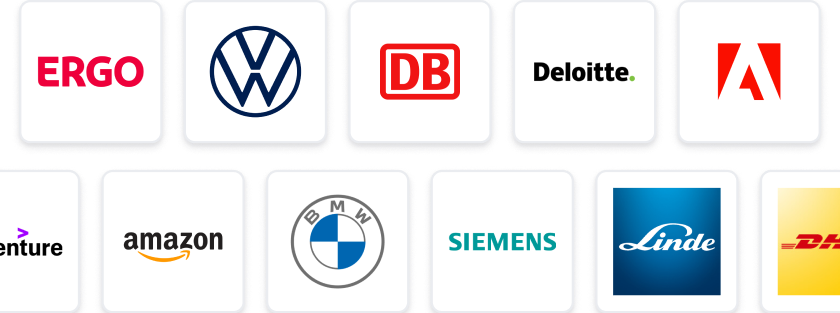At a Glance
- Tasks: Join a team to develop cutting-edge image analysis and machine learning software.
- Company: Work at a prestigious research centre focused on life sciences innovation.
- Benefits: Enjoy a competitive salary, flexible hours, and hybrid working options.
- Why this job: Be part of groundbreaking research with vast datasets and advanced technologies.
- Qualifications: PhD or equivalent experience in a relevant field; strong technical background required.
- Other info: Initial 3+ year contract with potential for permanent position.
The predicted salary is between 30000 - 42000 £ per year.
A prestigious research centre is seeking a talented developer with expertise in image analysis and machine learning to bring their skills to bear on cutting edge research. There is flexibility towards either a purely engineering or research role. You will work on a range of projects relating to image analysis in the life sciences, to advance the state of the art.
The team use a variety of evolving and experimental image processing and machine learning techniques, starting from modelling in tools including MATLAB through to development of image analysis (2D, 3D and 4D) and machine learning software in Python. Datasets are vast (terabytes to petabytes) and significant computational power and HPC is available.
You will have:
- A relevant PhD (or equivalent experience), and a good technical degree in a relevant subject, backed by strong A-level grades.
- Intellectual curiosity, drive, energy and reasoning skills.
- Team working and an interest in working alongside researchers with diverse backgrounds.
- Adaptability given rapidly evolving techniques.
- Strong algorithm development and software engineering ability, particularly around computational modelling for image analysis, image processing and/or machine learning (ideally CNNs for volumetric data). Increasingly, software architecture is a consideration. Python, TensorFlow, Keras, PyLattice or similar technologies would be indicative; additional languages such as C++ are also acceptable.
- Familiarity with computer vision, big data, geometric feature extraction, cellular imaging, timelapse imaging and tracking, volumetric tiling, voxel imaging, 3D graphics, spherical harmonics (3D, or 4D hyperspherical), light-sheet microscopy, particle image velocimetry (PIV), EFM and/or similar areas would be beneficial.
This role will initially be a fixed term contract for 3+ years, with the potential to become a permanent position at that time. Salary is competitive and benefits are excellent. Flexible hours and hybrid working are available.
Postdoc / Scientific Software Developer employer: ECM Selection (Holdings) Limited
Contact Detail:
ECM Selection (Holdings) Limited Recruiting Team
StudySmarter Expert Advice 🤫
We think this is how you could land Postdoc / Scientific Software Developer
✨Tip Number 1
Familiarise yourself with the latest advancements in image analysis and machine learning. This will not only help you understand the projects you'll be working on but also allow you to engage in meaningful conversations during interviews, showcasing your passion and knowledge.
✨Tip Number 2
Network with professionals in the field by attending relevant conferences or workshops. This can provide you with insights into the latest techniques and may even lead to valuable connections that could help you land the job.
✨Tip Number 3
Brush up on your programming skills, particularly in Python and any relevant libraries like TensorFlow or Keras. Being able to demonstrate your coding abilities through practical examples or personal projects can set you apart from other candidates.
✨Tip Number 4
Prepare to discuss your experience with big data and computational modelling. Be ready to share specific examples of how you've tackled similar challenges in the past, as this will highlight your problem-solving skills and adaptability.
We think you need these skills to ace Postdoc / Scientific Software Developer
Some tips for your application 🫡
Tailor Your CV: Make sure your CV highlights your relevant experience in image analysis, machine learning, and software development. Emphasise any projects or roles where you've used Python, TensorFlow, or similar technologies.
Craft a Strong Cover Letter: Write a cover letter that showcases your intellectual curiosity and adaptability. Mention specific projects or experiences that demonstrate your skills in computational modelling and algorithm development.
Highlight Teamwork Experience: Since the role involves working alongside researchers from diverse backgrounds, include examples of successful teamwork in your application. This could be from previous jobs, academic projects, or collaborations.
Showcase Relevant Skills: In your application, clearly outline your technical skills related to image processing and machine learning. If you have experience with big data or computer vision, make sure to mention it as it aligns well with the job requirements.
How to prepare for a job interview at ECM Selection (Holdings) Limited
✨Showcase Your Technical Skills
Be prepared to discuss your experience with image analysis, machine learning, and computational modelling. Highlight specific projects where you've used Python, TensorFlow, or Keras, and be ready to explain your approach to algorithm development.
✨Demonstrate Intellectual Curiosity
Express your passion for the field by discussing recent advancements in image processing and machine learning. Show that you stay updated with evolving techniques and are eager to learn and adapt.
✨Emphasise Team Collaboration
Since the role involves working alongside researchers from diverse backgrounds, share examples of how you've successfully collaborated in a team setting. Highlight your adaptability and communication skills.
✨Prepare for Technical Questions
Expect questions related to big data handling, computer vision, and specific technologies mentioned in the job description. Brush up on concepts like volumetric data processing and geometric feature extraction to demonstrate your expertise.
